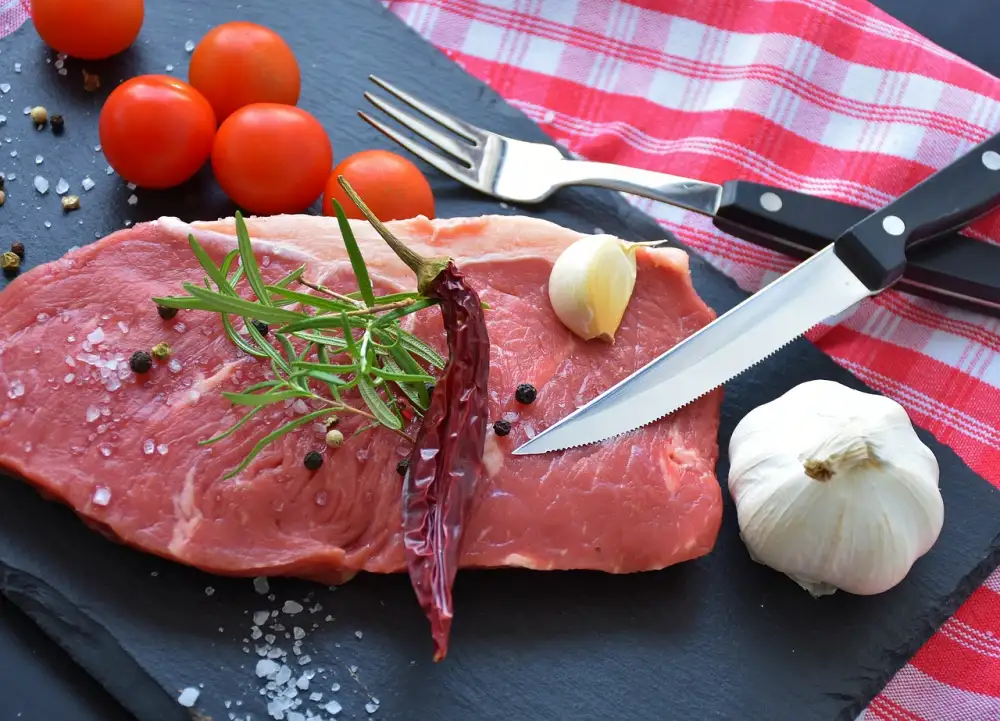Master the Art of Stir Fry: Unleash the Flavors of Asian Cuisine

Stir fry is a popular cooking technique in Asian cuisine that involves quickly frying ingredients in a hot pan or wok. This method allows for the flavors of the ingredients to be preserved, resulting in a delicious and vibrant dish. Stir fry is not only a quick and easy way to prepare meals, but it also offers a wide range of possibilities for creativity and experimentation in the kitchen. Whether you're a beginner or an experienced cook, mastering the art of stir fry will unlock a world of culinary delights.
Benefits of Stir Fry Cooking Method
The stir fry cooking method offers numerous benefits that make it a popular choice in Asian cuisine. Firstly, stir frying allows for quick and efficient cooking, as the high heat and constant stirring ensure that ingredients are cooked evenly and retain their natural flavors and textures. This method also requires minimal oil, making it a healthier option compared to deep-frying or sautéing. Additionally, stir frying helps to preserve the nutritional value of vegetables, as they are cooked for a shorter period of time. Finally, the vibrant colors and fresh aromas of stir-fried dishes make them visually appealing and appetizing. With its speed, flavor retention, and health benefits, it's no wonder that stir fry has become a staple in kitchens around the world.
Essential Ingredients for Stir Fry
To master the art of stir fry, it is crucial to have the right ingredients on hand. Here are some essential ingredients that will help you create authentic and flavorful Asian dishes:
1. Protein: Choose from a variety of proteins such as chicken, beef, pork, shrimp, tofu, or tempeh. Cut them into thin strips or bite-sized pieces for quick and even cooking.
2. Vegetables: Opt for an assortment of colorful vegetables like bell peppers, broccoli, carrots, snap peas, mushrooms, and bok choy. Slice them thinly or chop them into small pieces to ensure they cook evenly.
3. Aromatics: Garlic and ginger are key flavor enhancers in stir fry dishes. Mince or grate them finely to release their fragrant oils during cooking.
4. Sauce: A good stir fry sauce is essential to bring all the flavors together. You can make your own by combining soy sauce, oyster sauce, hoisin sauce, sesame oil, rice vinegar, and a touch of sweetness like honey or brown sugar.
5. Cooking Oil: Use high-heat cooking oils like peanut oil or vegetable oil for stir frying. These oils have a higher smoke point which prevents burning and allows for fast cooking.
6. Seasonings: Enhance the taste with seasonings like salt, pepper, chili flakes, or Chinese five-spice powder according to your preference.
By having these essential ingredients in your pantry and fridge, you'll be well-prepared to create delicious stir fry dishes that burst with authentic Asian flavors!
Tips for Preparing Ingredients for Stir Fry
1. Slice ingredients uniformly: To ensure even cooking, it's important to slice your ingredients into similar sizes. This allows them to cook at the same rate and prevents some pieces from being overcooked while others are undercooked.
2. Marinate meat: For added flavor and tenderness, marinate your meat before stir frying. A simple marinade of soy sauce, garlic, ginger, and a touch of sugar can work wonders.
3. Prep vegetables in advance: Chop all your vegetables ahead of time so that they are ready to go when you start stir frying. This will save you time during the cooking process.
4. Blanche hard vegetables: Some hard vegetables like broccoli or carrots can take longer to cook than others. To ensure they are cooked through without overcooking the other ingredients, blanch them in boiling water for a few minutes before adding them to the stir fry.
5. Keep ingredients separate: When prepping your ingredients, keep them separate until you're ready to cook. This way, you can add them to the wok in the correct order and ensure each ingredient is cooked perfectly.
By following these tips, you'll be well-prepared to create a delicious and perfectly cooked stir fry every time!
Step-by-Step Guide to Stir Fry Cooking
1. Start by preparing all the ingredients beforehand. Chop vegetables into bite-sized pieces, slice meat or tofu thinly, and mince garlic and ginger.
2. Heat a wok or large skillet over high heat. Add oil and swirl it around to coat the bottom of the pan.
3. Add the aromatics like minced garlic and ginger to the hot oil and stir-fry for a few seconds until fragrant.
4. Add the protein, such as sliced chicken or beef, to the pan and cook until it is browned on all sides. Remove from the pan and set aside.
5. Next, add the vegetables to the pan starting with those that take longer to cook, like carrots or broccoli. Stir-fry for a few minutes until they start to soften.
6. Return the cooked protein back to the pan along with any sauces or seasonings you are using, such as soy sauce or oyster sauce.
7. Continue stir-frying everything together for another couple of minutes until everything is well-coated in sauce and heated through.
8. Taste and adjust seasoning if needed, adding more salt, pepper, or spices according to your preference.
9. Serve immediately over steamed rice or noodles for a complete meal bursting with flavors.
By following these simple steps, you can create delicious stir fry dishes that showcase vibrant colors, textures, and flavors characteristic of Asian cuisine
Popular Stir Fry Variations
1. Vegetable Stir Fry: A colorful and nutritious option, vegetable stir fry combines a variety of fresh vegetables such as bell peppers, broccoli, carrots, and snap peas. Add a flavorful sauce like soy sauce or teriyaki for a delicious vegetarian dish.
2. Chicken Stir Fry: Tender chicken breast slices cooked with an array of vegetables is a classic stir fry choice. Marinate the chicken in soy sauce and garlic for extra flavor before cooking.
3. Beef Stir Fry: Thinly sliced beef cooked quickly with onions, peppers, and mushrooms creates a hearty and satisfying stir fry. For added depth of flavor, marinate the beef in a mixture of soy sauce, ginger, and sesame oil.
4. Shrimp Stir Fry: Succulent shrimp pairs perfectly with stir-fried vegetables like bok choy, snow peas, and water chestnuts. Enhance the flavors with garlic, ginger, and a touch of chili flakes.
5. Tofu Stir Fry: For a vegetarian or vegan option packed with protein, tofu stir fry is an excellent choice. Crispy tofu cubes are tossed with colorful veggies in a tangy sauce made from soy sauce and rice vinegar.
6. Pad Thai: This popular Thai stir fry dish features rice noodles sautéed with shrimp or chicken along with bean sprouts, eggs, peanuts, and lime juice for a burst of flavors.
7. Mongolian Beef: Originating from China's Inner Mongolia region, this savory dish consists of thinly sliced beef cooked in a rich sauce made from soy sauce, hoisin sauce, brown sugar, ginger, and garlic.
With these popular variations at your fingertips, you can explore different flavors and textures to suit your taste preferences when mastering the art of stir fry cuisine!
Pairing Stir Fry with Rice or Noodles
Stir fry dishes are often served alongside rice or noodles, which complement the flavors and textures of the dish. The choice between rice or noodles depends on personal preference and the type of stir fry being prepared.
For a classic pairing, white jasmine rice is a popular choice as it has a delicate fragrance that enhances the flavors of the stir fry. The light and fluffy texture of jasmine rice provides a neutral base that allows the vibrant flavors of the stir fry to shine.
Alternatively, noodles such as udon, soba, or rice noodles can be used for a heartier option. These noodles absorb the flavors of the sauce and vegetables in the stir fry, creating a delicious and satisfying meal.
When serving stir fry with rice or noodles, it's important to cook them separately from the stir fry itself. This ensures that each component retains its individual texture and flavor. Simply prepare your chosen rice or noodles according to package instructions and then combine them with the finished stir fry just before serving.
Remember to adjust your seasoning accordingly when pairing stir fry with rice or noodles. If you're serving it with plain white rice, you may want to add more sauce or seasonings to ensure each bite is flavorful. On the other hand, if you're serving it with seasoned noodles, you may want to reduce the amount of sauce in your stir fry to avoid overpowering the dish.
Experiment with different combinations of stir fry and grains to find your favorite pairings. Whether you choose fragrant jasmine rice or chewy udon noodles, pairing them with a well-executed stir fry will create a harmonious balance of flavors and textures that will delight your taste buds.
Health Considerations for Stir Fry
While stir fry is a delicious and versatile cooking method, it's important to consider the health aspects as well. Here are some tips to make your stir fry dishes even healthier:
1. Use healthy oils: Instead of using traditional vegetable oil, opt for healthier alternatives like olive oil or avocado oil. These oils are rich in monounsaturated fats which are beneficial for heart health.
2. Load up on vegetables: Stir fry is a great way to incorporate a variety of vegetables into your diet. Aim to include a colorful mix of veggies like bell peppers, broccoli, carrots, and snap peas. These provide essential vitamins, minerals, and fiber.
3. Choose lean proteins: Opt for lean protein options like chicken breast, tofu, or shrimp instead of fatty cuts of meat. This helps reduce saturated fat intake while still providing the necessary protein.
4. Control sodium levels: Be mindful of the amount of soy sauce or other high-sodium sauces you use in your stir fry. Opt for low-sodium versions or use alternative seasonings like ginger, garlic, and herbs to enhance flavor without adding excessive salt.
5. Don't overcook vegetables: Overcooking vegetables can lead to nutrient loss. To retain their nutritional value, cook them quickly until they're still slightly crisp.
By following these health considerations, you can enjoy the flavors and benefits of stir fry while maintaining a nutritious diet.
In conclusion, mastering the art of stir fry opens up a world of flavors and possibilities in Asian cuisine. By understanding the benefits of this cooking method, using essential ingredients, and following proper techniques, you can create delicious and healthy stir fry dishes at home. Experiment with different variations and pairings to discover your favorite combinations. With practice and a little creativity, you'll soon become a stir fry master, impressing family and friends with your culinary skills. So go ahead, unleash your inner chef and enjoy the wonderful world of stir fry!
Published: 06. 12. 2023
Category: Food



